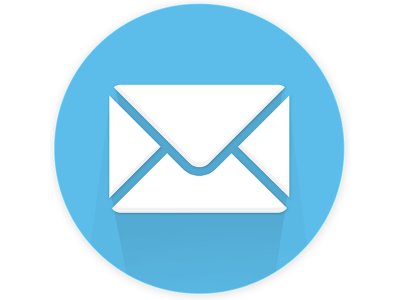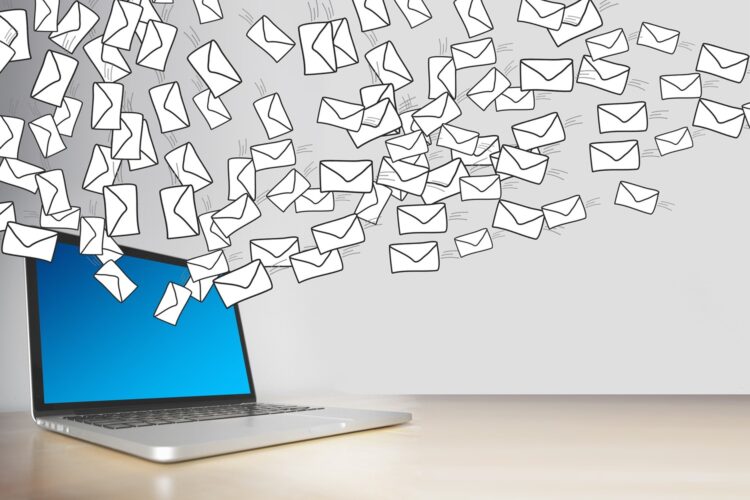

And this is why newsletter marketing matters. Have you ever heard the phrase – “The money is in the list”? That is especially true for small business owners – whether you know it or not. Getting a potential customer to visit your website is great, but it’s even better if you can get them subscribed to your newsletter. With each new subscriber, you are building your “list” of potential and current customers. With this list – you can literally create sales on demand because, by opting in, these people have already demonstrated that they’re interested in what you have to say. Now, you don’t have to wait for them to come to your website. You can reach out to them.
Email Newsletter Marketing is Easier
The predecessor of newsletter marketing is direct marketing, which involved sending out actual printed materials like pamphlets, brochures and catalogs through the mail. But what most businesses will tell you is that sending email newsletters is so much better. Here’s why:
- It’s more affordable. You don’t have to invest a lot of money sending out digital newsletters, because you don’t have to print out anything. You also won’t have to spend precious time stuffing envelopes with printed materials. Email newsletters eliminate printing and postage expenses as well.
- It’s also more convenient. In comparison to traditional newsletter marketing, email newsletters are easy to create and take less time to reach more people.
- It’s easy to track your efforts. With direct marketing, you know it’s working when your sales spike up after launching a DM campaign. But if it doesn’t work, you can’t really pinpoint the exact reason. You can, however, with free analytical tools inside your newsletter service dashboard. You can find out the percentage of emails that were opened, whether you used an effective headline or not and, most importantly, you can find out how many of your recipients clicked on your call to action.
- Your newsletters are easy to share. With printed materials like brochures, you can share them with only a handful of people – and that’s if you’re lucky. But that’s one reason why email newsletters are so great; subscribers share and forward your newsletters to their own contact list. So if you send something that your recipients will find a lot of value in, email is the perfect medium to spread the word to their contacts.
Newsletter Topics that Get Clicks
The main purpose of your newsletter is to resolve customers’ problems related to your business and to continue to connect with them – so they will come to you for a solution if the need arises. Some good newsletter topic ideas to get you started include:
Company News
People like getting an inside look at your business (awards, nominations) and anything that happens inside your company (new employee, charitable event, etc).
You can announce special offers, discounts, new products or services.
This is a tried and tested way, boosting revenue in a low sales period!
Discuss the latest developments in your industry.
Emails are essentially a relationship-building tool, and here you can establish yourself as an authority by providing updates about the latest developments, trends and other news in your industry.
Reviews of Happy Clients.
When you get a positive review from a customer, you need to share it in your newsletter. This helps to nurture your relationship with all your customers who have subscribed to your list and shines the spotlight on those who take the time to leave a review.
Surveys & Feedback.
It’s critical to know how your customers feel about your products and services. Many times, it’s just not possible to get feedback while they are in-store, so newsletter surveys are a good way to get much needed feedback about your business.
You can give practical advice.
The words “how to” are two of the most commonly “googled” words, so take advantage of it by answering questions that you think your customers are probably asking. You can provide tips or advice on ways to help them find new solutions to problems related to your industry.
Enlisting volunteers for charity efforts.
Many recipients are willing to help out, and it elevates your “good guy” reputation when you don’t always use your newsletter for promotional reasons. All these things must adhere to two crucial rules:
(1) Rule 1 is that the info should be interesting for the reader.
(2) Rule 2 is that in some way or another, the info should make your business look better.
Of course, there are lots of other rules that pretty much go without saying. In order for your newsletter to be readable, thoroughly proofread and correct typos or grammatical errors that may misinform readers. This is not something that you want to type up on the fly. The more effort you put into creating an awesome newsletter, the more you’ll get out of it.


